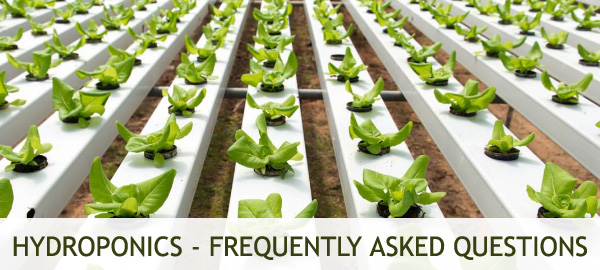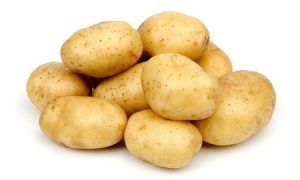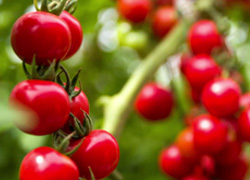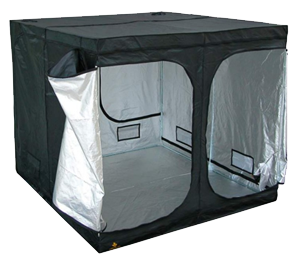1. How do You Choose the Right Hydroponic System?
To be successful, you first have to choose the right hydroponic system that fits your situation.
Before setting up the hydroponic system, it is necessary to consider the following factors to ensure you make an informed decision.
-
- Space availability
- Lighting
- Available finance
- Time availability
- Type of crop to be grown
- Future expansion
It is advisable to start with a passive system rather than an active system because passive systems are affordable, simple to build and suited for smaller plants.
On the other hand, an active system is costly but more efficient, uses pumps and is best for large plants and gardens. It also requires less attention since it has its timer.
You also have to choose whether it will be a media based system or water culture system. Media based system such as ebb and flow (flood-and-drain) rely on growing medium to offer support to the plants.
Although the media system is costly, complicated, and the media requires regular replacement, it holds nutrients solution for the plants.
There is need to protect the entire system from power blackout so that the pumping of water and nutrient to the plants is not affected. Media based system is efficient because of its ability to recycle nutrients.
Contrary to this, water culture systems function without media. It is simple and inexpensive to start. The system is good, especially for the water-loving plants.
2. How often do You Water Hydroponic Plants?
The frequency of watering the hydroponic plants usually depends on the situation at hand. There is no general rule of thumb as to how often one should water the plants.
If the growing media and the roots seem to be getting dry in between set watering period, the frequency of watering should be increased.
However, if they seem to be wet, reduce the rate and monitor what happens to the plants.
Depending on the nature of the system, type of crop grown, and type of media used, a grower should get to know what works best in their situation.
3. How often to Feed Hydroponic Plants?
Feeding of the hydroponic plants also depends on factors such as:
- Age of the plant
- Prevailing temperature
- Humidity
- Type of crop grown
- Nature of medium
Younger plants or seedlings require a small amount of nutrient hence their feeding period is shorter.
Plants at the flowering and fruiting stages need feeding for a prolonged time. Thus, the frequency of feeding the medium should be increased as the plants continue growing.
Below is an example of feeding schedule for different media
- Perlite – feed once every 2-3 hours during the day. At night, use lower feeding frequency.
- Expanded clay – feed once every 1-2hours during the day. At night lower the feeding frequency.
- Rockwool/coconut fiber/soil – feed 3-6 times per day. The feeding should be spread equally during the day. Do not feed at night to avoid waterlogging.
4. How often should I change my Hydroponic Reservoir?
To ensure that healthy plants are maintained, it is essential to carry out weekly maintenance. The solution can be changed as often as once a week.
The solution may require regular changing depending on the volume of the tank and reservoir.
Monitor the level of water in the tank, the pH and Electrical Conductivity (EC) of the nutrient solution to get a good idea of the nutrient concentration as it is a measure of dissolved salts in water. Can as well apply this
Example – In a 10-gallon tank, replace about 2 gallons weekly. Within five weeks, all the 10 gallons will have to be replaced thus the system should be flushed and sterilized every five weeks
5. Why is Hydroponics Expensive?
The cost of installing and maintaining a hydroponic system is one of its main disadvantages. Both the starting and the operational costs are high compared to conventional gardening.
The materials and equipment used are costly, and you must have them to operate the system well.
6. What Plants can you Grow Hydroponically?
Vegetables that will do well in a hydroponic garden include basil, parsley, string beans, green peppers, hot peppers, melons,squash, tomatoes, artichokes, beets, and asparagus.
We also have flowers such as roses, carnations, dianthus, and chrysanthemums.
7. Is Hydroponics good for the Environment?
Yes! Hydroponics is good for the environment. The following are some of its benefits to the environment.
- Less usage of water – Requires less than 10% of the amount of water required for the conventional growing of crops in the soil. The only loss of water experienced here is through evaporation.
- Less area of land is required leaving more land for other use.
- Less fertilizer needed – up to 60% of fertilizer is saved through this system because the nutrient solution circulates the roots of the plant and absorbed.
- There is reduced fossil fuel consumption
- Less pesticide use – since the plants are grown indoors, there are less soil and insect pests thus reducing the need for pesticide use.
8. How many Times a day Should I Flood and Drain?
The frequency of flooding and draining is determined by several factors which include:
- Climate demand
- Media used for growing
- Size of plant
Example – clay pebbles do not hold much water thus flood more often. A mixture of coco and clay pebbles holds much water hence don’t have to be regularly flooded.






Comments are closed.